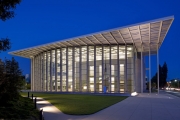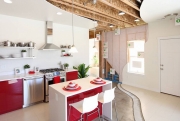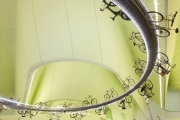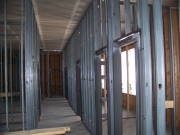It’s no fun to spend money on something you can’t see. Therefore, some green homebuilders are giving you a peek inside their homes’ walls via full-scale "deconstructed" models in order to showcase their energy-saving features.
Homebuilders are finding that green homes, which save owners money in addition to helping the environment, are a powerful differentiator in today’s real estate market. However, buyers may be more motivated to invest in goods that they can actually see. Companies such as Central New York builder Miller Homes and Utah’s Garbett Homes are using deconstructed models to show prospective buyers – as well as building industry professionals and members of the general public – actual sustainable products located inside their buildings’ walls. Miller Homes was awarded a grant from the New York State Energy Research and Development Authority to implement high-performance building practices, with a focus on tightening the building envelope, and then partnered with Dow Building Solutions and CDH Energy to build an educational, deconstructed duplex. Garbett Homes has built several deconstructed models to reach out to their target market, first-time home buyers. Referring to a Garbett deconstructed model, Rene Oehlerking, director of marketing at Garbett Homes, says, “Nothing is mocked up. We built the home and we stripped the walls, basically taking parts of the home and peeling them back so people can see the actual application. Everything in our deconstruct is a standard feature.”











